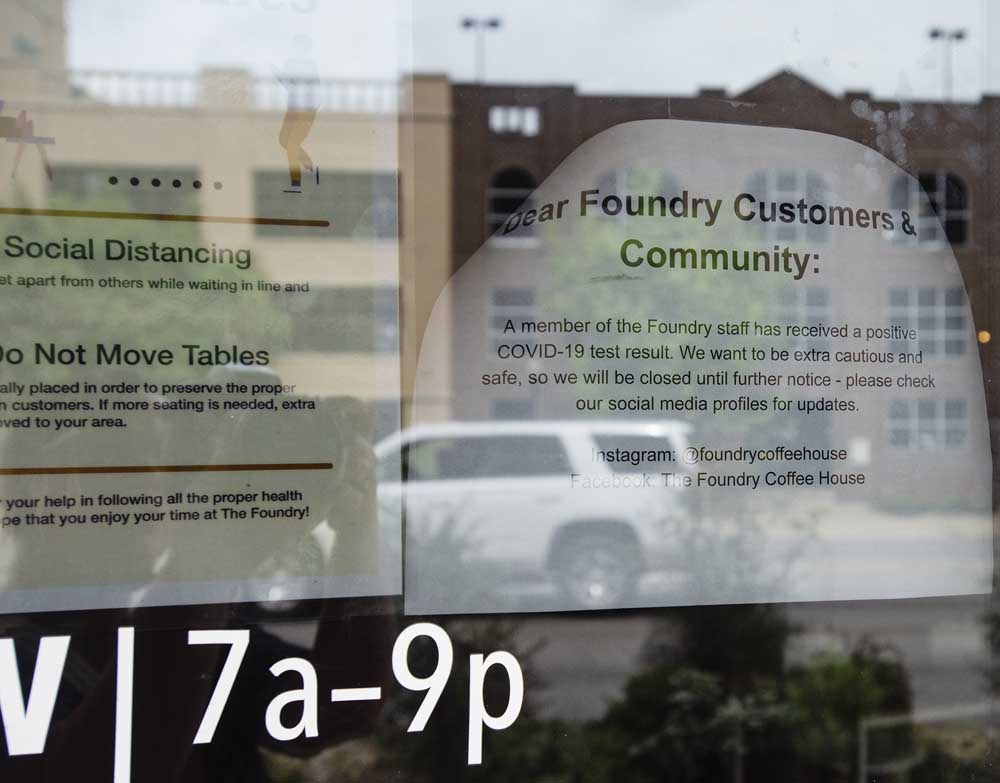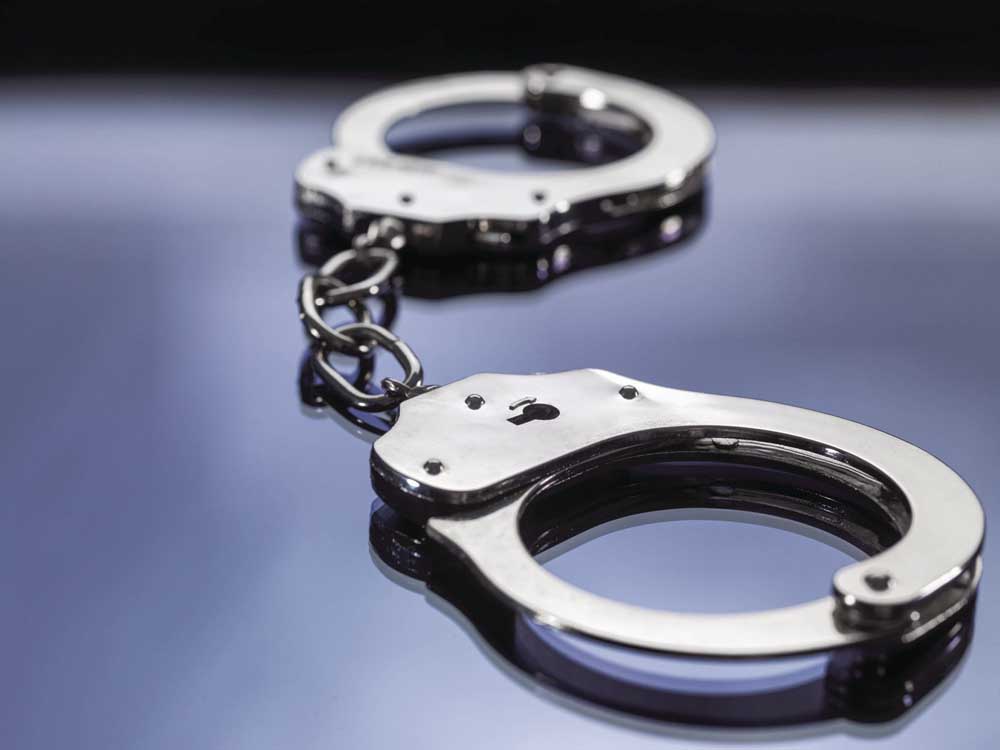Five years pass since first COVID case in Tyler
Published 12:55 pm Wednesday, March 12, 2025

- In June 2020, a sign tells customers that The Foundry Coffee House temporarily closed because an employee tested positive for COVID-19. (Tyler Morning Telegraph File)
Today marks five years since the first COVID-19 case was reported in Tyler, leading to shutdowns, quarantining, stay-at-home orders, cancellations and more.
Half a decade and over 150,000 cases later in the East Texas area, health experts and school officials are still feeling the lasting impact of the virus.
Trending
“COVID-19 is still out there, but the cases typically aren’t as intense,” Northeast Texas Public Health District CEO George Roberts said. “People who are getting coronavirus now are recovering pretty well from it.”
Roberts said the first cases were reported March 10, 2020 in Gregg County, while the first reported case in Tyler came on March 13 that year.
The pandemic brought on stay-at-home orders, including non-essential workforce members doing their jobs at home instead of in office settings. People were forced to quarantine for two weeks or more after being infected with the virus, and many businesses temporarily closed and underwent professional cleaning anytime an employee got sick.
The remainder of the school year was canceled and many graduation ceremonies were held virtually. In-person ceremonies had strict rules, including limited capacity. Meetings, such as school board and city council, were held virtually rather than in-person. Church services were also paused. While many churches were already hosting virtual worship, others joined the effort and continue it still — in addition to in-person services — five years later.
Drive-thru COVID testing sites were common. Gyms, restaurants, bars and other places of business had capacity rules to follow and also had other protocols in place to ensure their customers’ health was top priority. Hand sanitizer was always front and center at these places, and some businesses installed plastic dividers to avoid direct face-to-face interaction, and therefore germ spread, with customers.
Social distancing — staying 6 feet apart — was recommended, and signs could be seen at many businesses, parks and other places where people would congregate. At places like Caldwell Zoo, some exhibits were temporarily closed due to the pandemic.
Trending
Certain protocols continued into 2021 and beyond, although things did eventually slow down and return to a new normal.
While COVID-19 may be a distant memory for some, Roberts warned some are still at risk for the virus.
“There is still a pretty high death rate for senior citizens in our communities,” Roberts said.
In 2021 — the first full year of the pandemic — East Texas saw some of the highest hospitalization rates, he said.
It was a challenging time for hospitals, which were forced to adapt quickly while handling what Roberts described as a “novel virus” that emerges only once every century.
“We had to do a lot of pivoting along the way,” Roberts said. “As we found new information, we would try to pivot to a different way of handling things.”
While COVID-19 still poses a threat, the state and country have learned how to manage the deadly disease more effectively, he said.
“They know how to better handle these things in the future,” Roberts said. “There’s been lots of learning in this, but if a novel virus comes around again, we’ll still have to do some learning.”
Tyler ISD Superintendent Marty Crawford agreed the district and its staff were forced to learn off the cuff.
“Some of the things that we did during COVID, and decisions made, we didn’t know,” Crawford said. “We tried to build this plane while it was in the air.”
Despite the challenges, Crawford said the district came out stronger, with its focus shifting to student safety and uninterrupted education.
“Once the illness had subsided, we asked how could we integrate that into our normal daily lives of kindergarten through 12 education?” Crawford said. “But I think we’re better off because of it.”
Crawford said the one silver lining from the COVID-19 pandemic was how the school system has been able to incorporate technology, transforming how students and teachers interact.
“Not a reliance on technology, but certainly more of an integration of technology into your day-to-day activities in the operations of the school system,” he said.
Health experts and schools said they’re more prepared to handle health protocols after COVID-19 but still encourage standard cleanliness measures.
“We continue to have those healthcare practices in place so that we can keep our kids healthy and safe and our teachers healthy and safe,” Crawford said.






